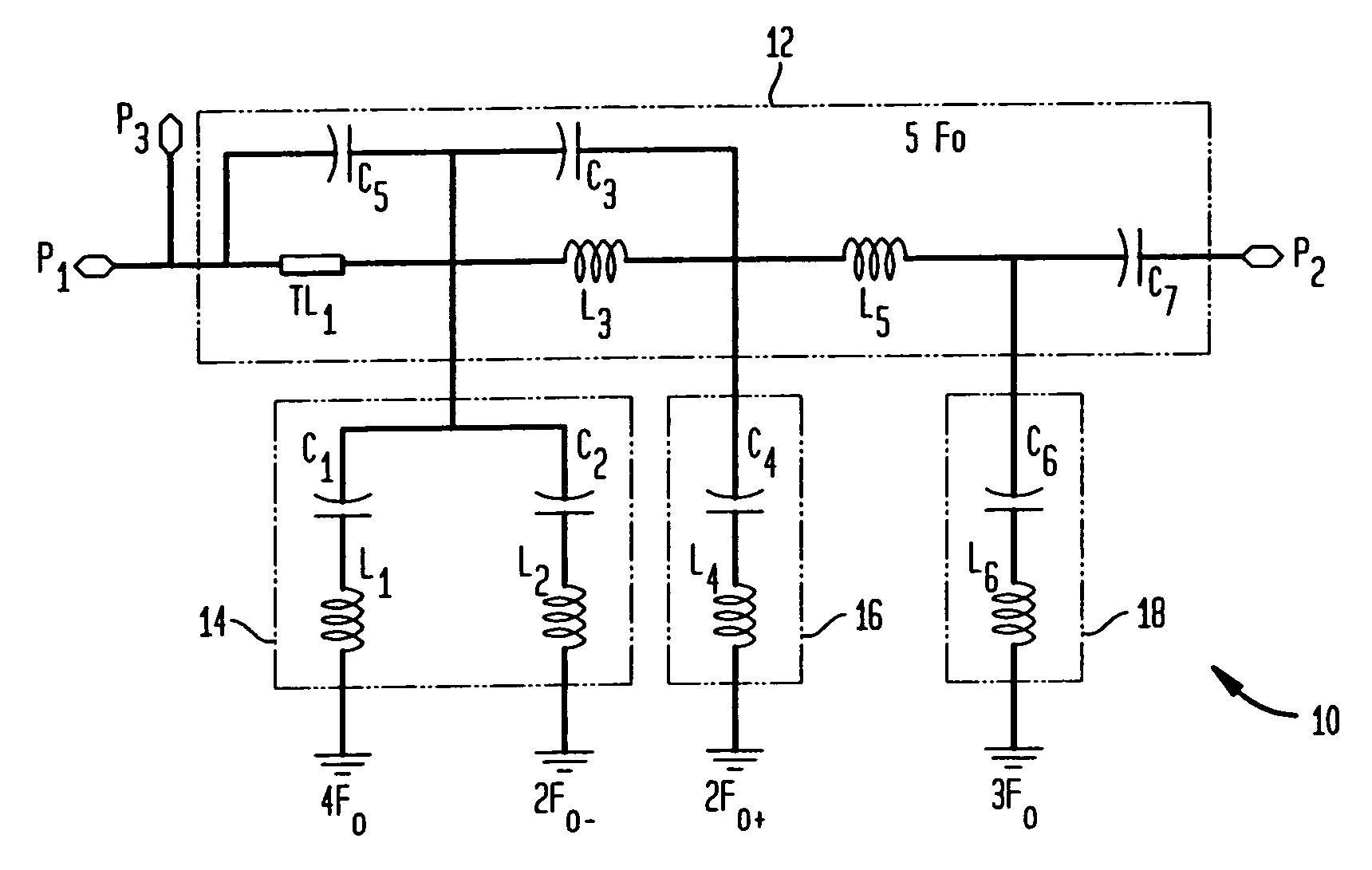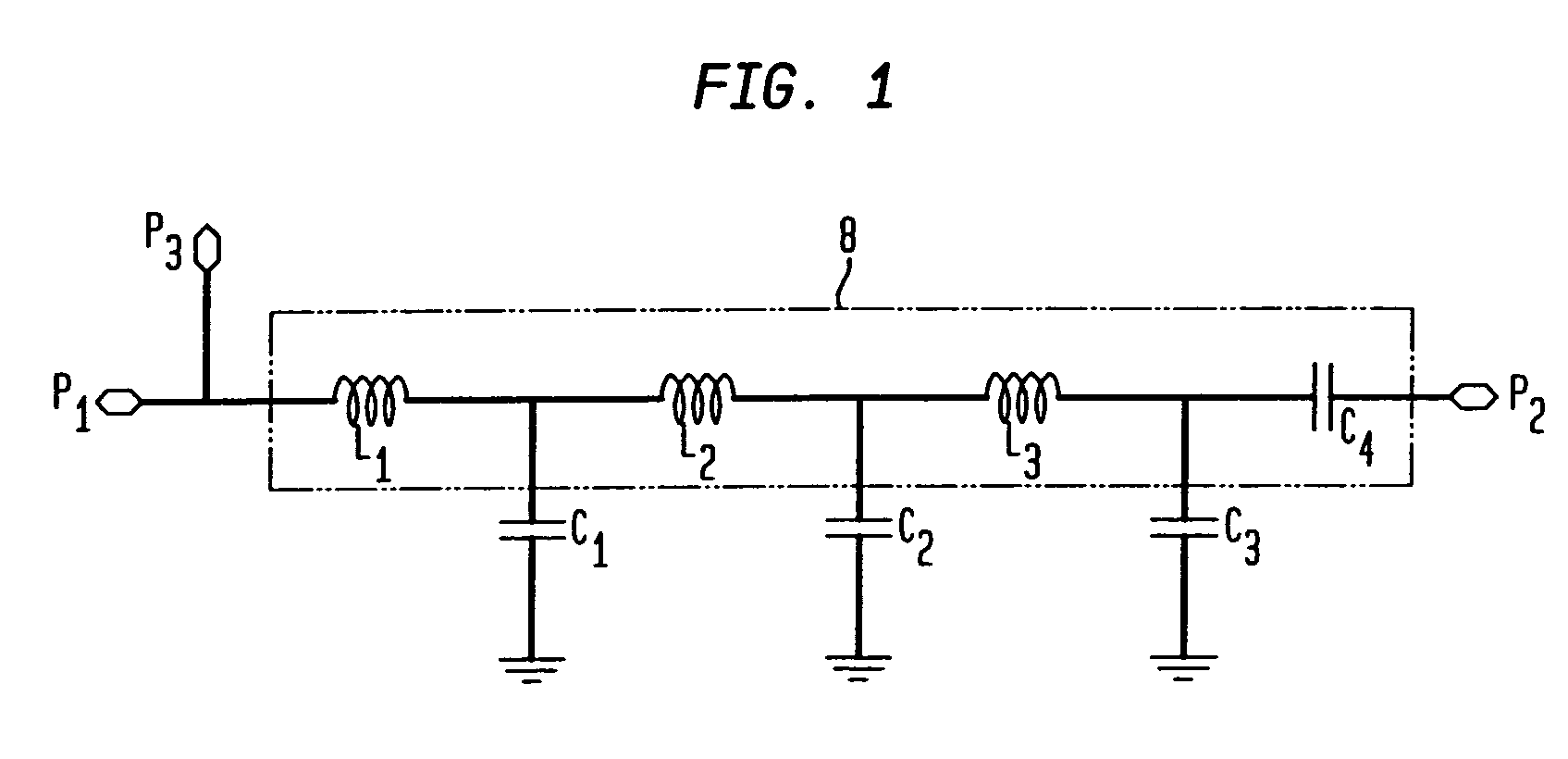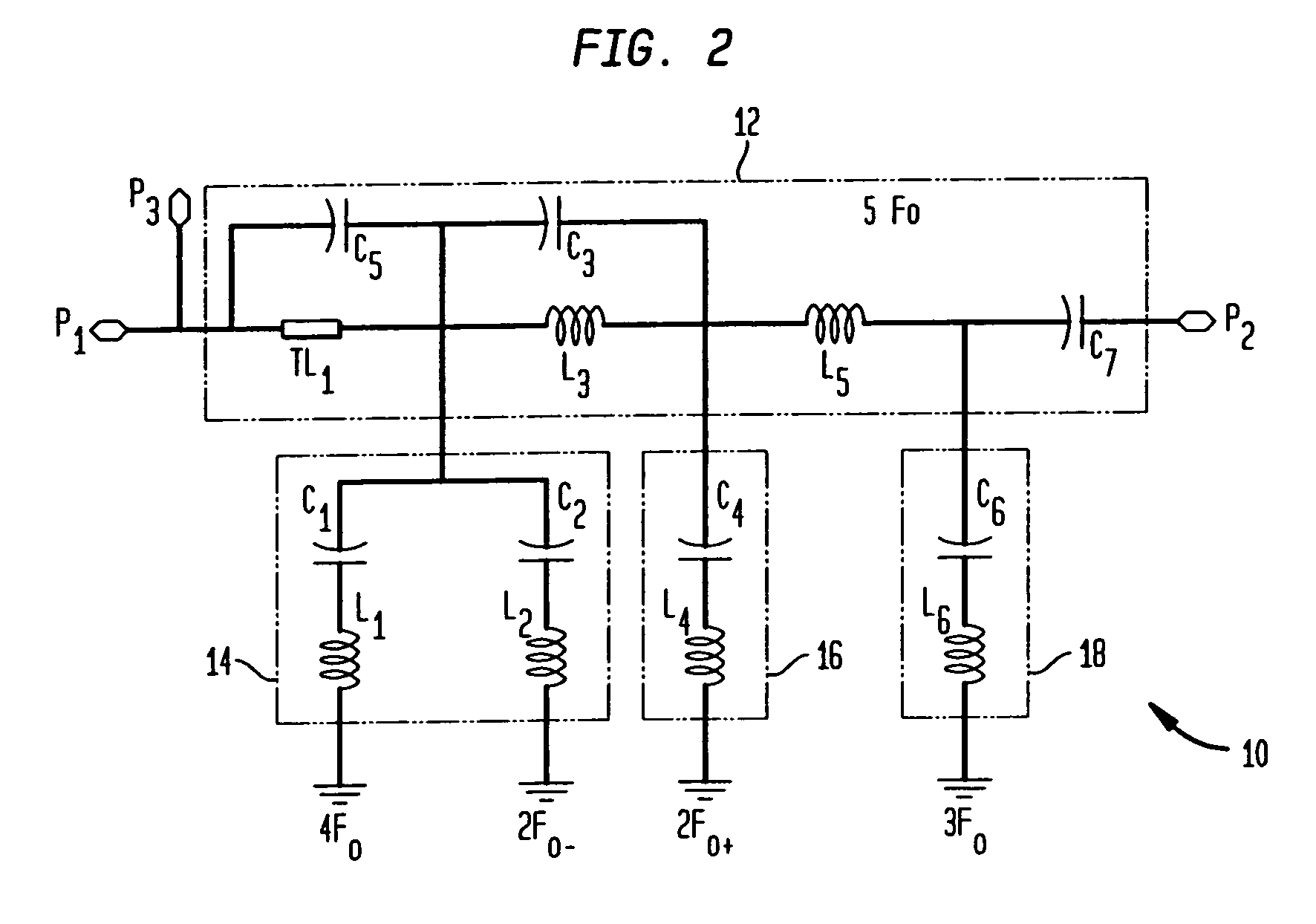Combined matching and filter circuit
a filter circuit and combined technology, applied in the field of combined matching and filter circuits, can solve the problems of difficult to obtain the required level of harmonic suppression, large circuits made using discrete components, and limited number of shunt elements in typical matching circuits, etc., to achieve the effect of increasing harmonic rejection capability and increasing harmonic rejection of circuits
- Summary
- Abstract
- Description
- Claims
- Application Information
AI Technical Summary
Benefits of technology
Problems solved by technology
Method used
Image
Examples
Embodiment Construction
[0018]The present invention provides for combining impedance matching and harmonic filtering functions into a single match-and-filter circuit in a way that significantly improves the harmonic filtering. The invention will now be described in more detail by reference to the attached figures in which like numbers refer to like elements.
[0019]FIG. 1 is a circuit diagram of an impedance matching circuit, designed to operate at a single, fundamental frequency. The circuit has an inductive series arm 8, comprising inductors L1, L2 and L3 in series and capacitor C4. The circuit also has capacitive shunt arms, each arm including a separate capacitor C1, C2, and C3. Components L1, L2, L3, C1, C2 and C3 are chosen so that the circuit has a first effective impedance “A” at port P1 and a second, effective impedance “B” at port P2. In this way the circuit can, for instance, match an amplifier having an output impedance “A”, to a transmission line having an input impedance “B”. Capacitor C4 is in...
PUM
 Login to View More
Login to View More Abstract
Description
Claims
Application Information
 Login to View More
Login to View More - R&D
- Intellectual Property
- Life Sciences
- Materials
- Tech Scout
- Unparalleled Data Quality
- Higher Quality Content
- 60% Fewer Hallucinations
Browse by: Latest US Patents, China's latest patents, Technical Efficacy Thesaurus, Application Domain, Technology Topic, Popular Technical Reports.
© 2025 PatSnap. All rights reserved.Legal|Privacy policy|Modern Slavery Act Transparency Statement|Sitemap|About US| Contact US: help@patsnap.com



